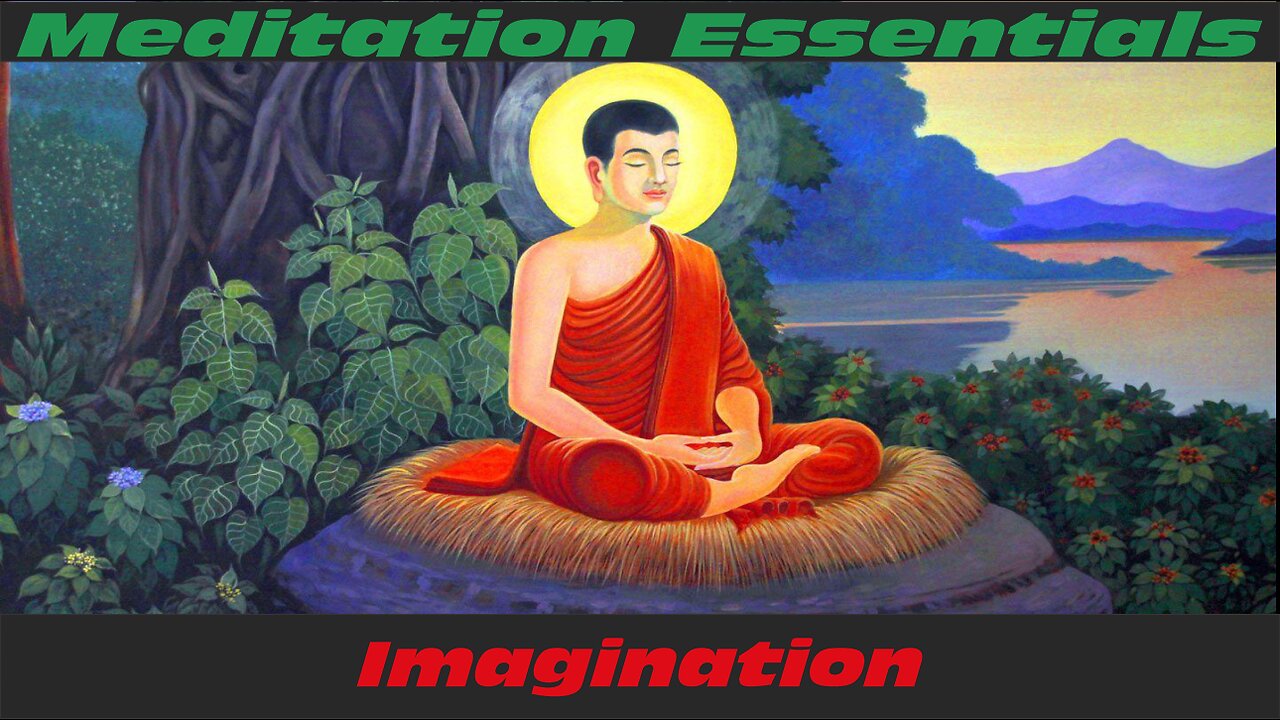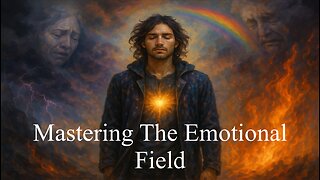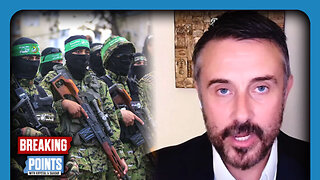Premium Only Content

Meditation Essentials 09: Imagination
Meditation is a state of consciousness; it is not a behavior to imitate; it is not a posture; it is not something that can be bought. Meditation is a state of experience; a state of perception; a state of being in which the very essence of what we are as a living creature is freed of its conditioning, and is then able to perceive reality as it is. In other words, meditation is the consciousness in its natural state.
This is supremely significant for us to understand if we want to understand life, suffering, and happiness. We experience everything through perception, but we do not realize that our perception is modified and heavily conditioned by layers and layers of factors. On a superficial level, our perception is modified by the body, by the senses — we may have eyes that are imperfect, ears that are imperfect, a sense of taste or touch that is imperfect; we may have a brain that is imperfect; we may have a nervous system that is imperfect, and all of these factors are merely on the physical level, the most superficial level of experience. What about the imperfections we may have psychologically that also modify and influence our perception? Those modifications are much more profound than the physical ones. They influence us in much deeper ways than physicality does. So to understand meditation, we have to become aware of all those conditioning factors. We have to learn about them; we have to learn to see what they are, to know what they are, and to learn to see clearly in spite of them.
The essentials of meditation begin with understanding what consciousness is. Every living thing has consciousness — it is what defines life. Even though modern science is struggling to explain consciousness, to understand consciousness, there are many human beings who understood it very well and have taught how to use it very well, but unfortunately their teachings have been misunderstood and misapplied. If we study the teachings of Jesus, Buddha, Krishna, Moses, Padmasambhava, Milarepa, and many other teachers who understood consciousness, who taught how to use consciousness, we can learn how to use our consciousness in a better way. Fortunately, modern science is now trying to learn about consciousness and is even learning to listen to the carriers of those ancient traditions. We see dialogues opening up between physicists and meditators or doctors and meditators, because they are recognizing that meditation is a valid scientific experience of what the consciousness is.
Consciousness is a living thing; it is what gives us life, it is what gives life to everything that exists, and it has certain qualities that we need to understand with explicit clarity if we want to understand religion, dreams, meditation, and even science. Science has recognized that consciousness affects science. If you have studied quantum physics, any of the new mathematics, dimensionality, anything that has been recently worked on scientifically, they have finally admitted that the observation (consciousness) of an experiment changes the experiment.
Consciousness
How do we define consciousness?
The state of being conscious; knowledge of one’s own existence, condition, sensations, mental operations, acts, etc.
Immediate knowledge or perception of the presence of any object, state, or sensation.
An alert cognitive state in which you are aware of yourself and your situation
Summary: a state of being, something experiential.
Perception is experienced in the present moment.
We are a perceiver, a consciousness, perceiving the experience of being. That itself is simple to understand, but we forget this all the time. We forget that we are a consciousness.
To be conscious is to be here and now, to be aware of perceiving; that is what it means to be conscious, and that is the bottom line for any real spirituality or religion - to be here and now, to be awake, to be aware. That is the kindergarten of religion, of spirituality.
Nowadays we hear “mindfuness” talked about everywhere. Everybody thinks this is some new thing, like a great breakthrough, but in fact mindfulness is the ABC’s and 123’s of every religion in the world; it is the “kindergarten” of real spirituality. Mindfulness, being present, is nothing new, but if you do not know how to be here and now continually, then you do not know religion because everything in religion and spirituality — especially meditation — cannot happen without consciousness active in the present moment, and the ability to sustain that active, watchful presence in the moment - to be present continually from moment to moment. It is to be an observer, to be in an alert, cognitive state, perceiving your state of being. That is to be conscious. That is the basis of all the lectures we have given up until now, and all of that is visually depicted in what we call the Tree of Life.
The Tree of Life
The Tree of Life is simply a map of consciousness, and it is mentioned in every religion of the world under different names. In the Northern European traditions they call it Yggdrasill. In the Asian traditions they call it the Bhavachakra (some people call it the wheel of Samsara) and Kalachakra. In the Bible it is called Etz Chaim (which, if you know Hebrew, you know that it is plural). In the Book of Genesis and the Book of Revelation (two of the most important books of the Bible) we find this described repeatedly: the Tree of Life. Unfortunately, most people who study those scriptures think it means a literal tree somewhere in the world. That is not the meaning.
The Tree of Life is a symbol, it is a map of your Being, of your potential. It maps everything that exists. It is infinite, and it is a map of everything. At the very top, it depicts what is called the Absolute Abstract Space. In Buddhism, in Hinduism, that is called Brahma, Shunyata - the void, the emptiness, the potentiality from which everything else emerges. The Buddhist calls this Samantabhadra. From that abstract level there is gradual condensation into everything that exists. There are levels and levels of subtle nature, through multiple dimensions, that gradually descend and crystallize into materiality., which is the physical world represented by this very low sphere on this tree. This sphere is called Malkuth, which means the Kingdom. That is the physical world and our physical body. Everything that is more subtle than our physical body does exist, but outside of the range of our physical senses.
What is the proof of that? You can prove it right now: where are your thoughts? You can experience your thoughts, you can perceive your thoughts, but not with your physical senses. They do exist, they are happening, but not physically. They are registered in the brain, the brain senses them, the brain translates them, but we do not perceive them with any physical sense. They are happening in the other dimensions. This is the case with emotions as well. What about dreams? We perceive dreams, but not through our physical senses. What if I ask you to tell me or to remember what you had for breakfast? The image comes there, right? You see the image? You see your breakfast? That is not physical, but you can see it. Remember your car? Remember who you live with? Remember your house? Remember your room? Those images are there, but they are not physical. The Tree of Life maps that for us.
Malkuth represents physicality, while there are subtle, superior levels above it, and below it are inferior levels that are more dense. Classically these are called heavens and hells, but more specifically they relate to all the different parts of our psyche.
The abstract emptiness, the primordial space, first expresses as a trinity that is described in every religion. A trinity has the power of creation. The power of three — represented by the sephiroth of the first triangle — gives rise to the fourth sephirah, Chesed, which represents what we call Spirit or Atman. This is what is often called “the Self,” the Inner Being, and “Our Father” in Christian terms. That in turn unfolds into Geburah, divine consciousness, which unfolds into Tiphereth, willpower, then into Netzach, thought, then into Hod, emotion, then into Yesod, energy, then into Malkuth, physicality. All of that is inside of us, in densities, subtleties, and layers.
Here physically, in our physical bodies, we are not really aware of any of that. We are very much identified with physical sensations, physical experiences. We may have dreams. We may have fantasies. We may occasionally have an unusual experience that makes us believe there is something more than physicality, but since we cannot produce spiritual experiences at will, for us religion and spirituality are just beliefs, theories, concepts, ideas; maybe interesting, but we do not see it as real, because we do not experience it. We do not experience divinity, spirituality, because our perception is so conditioned, so filtered, and very heavy.
The Tree of Life help us understand how to experience the other levels of nature, how to understand them, master them, how to change. Instead of merely believing in the Divine, we can experience it. Instead of theorizing or guessing about it, we can know, see, talk to the Divine, experience the Divine. All of that is entirely possible. It is strange how religious and spiritual people believe very much in their religion, they honor the saints and great teachers from the past and venerate the scripture, but as soon as we start talking about talking to an angel or talking to God, they think we are crazy. They believe it was possible in the past, but not possible now. But it is - it is our natural birthright. In fact, it is our purpose.
Our purpose is to know the truth, to realize the reality. To do so we need to become conscious of the fact that physicality has its place in nature, but it is only a fraction of what exists. In the same way, light is a huge range of energy, but we only physically perceive an extremely narrow band of light. We think that what we see with our eyes is all that exists, but it is not. Light has an incredibly wide range and diverse complexity, and that is what is depicted on the Tree of Life - the whole range of light: the ultraviolet and the infrared and beyond, mapped. We have senses that can perceive the entire range of light, but they must be developed. Right now, those senses are asleep in us. Though meditation you learn to restore those senses and expand them.
-
 13:30
13:30
MagnumOpus333
5 days agoMastering The Emotional Field
27 -
 10:59
10:59
The Car Guy Online
2 days agoFormer GM Engineer EXPOSES Planned Obsolescence Tactics.
17.5K15 -
 22:41
22:41
Ohio State Football and Recruiting at Buckeye Huddle
1 day agoOhio State Football: 7 Things to Know about the 2025 Buckeyes
6.79K3 -
 9:30
9:30
The Art of Improvement
21 hours ago $3.39 earned5 Common Behaviours That Kill Productivity
15.7K2 -
 50:56
50:56
SinCityCrypto
20 hours ago $1.60 earnedBitcoin on a Historical Run!
8.82K6 -
 13:18
13:18
Breaking Points
22 hours agoJeremy Scahill REVEALS Hamas Ceasefire Strategy
14.6K9 -
 23:28
23:28
Liz Wheeler
15 hours agoLEAKED Big Pharma Plot to Destroy RFK Jr.
12.1K10 -
 18:06
18:06
Actual Justice Warrior
15 hours agoMemphis Mayor REJECTS BLM Lies
20.3K15 -
 15:45
15:45
BlaireWhite
20 hours agoYes, I'm Trans. Yes, I'm A Christian.
12.5K55 -
 20:37
20:37
DeVory Darkins
20 hours ago $6.69 earnedDemocrats PANIC in fatal move as Jobs report leaves CNN DUMBFOUNDED
21.2K66